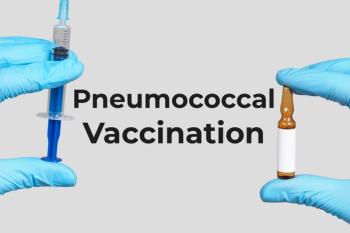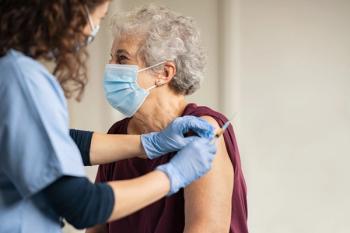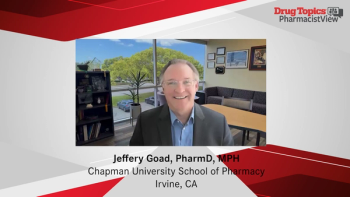Although coverage with human papillomavirus (HPV) vaccine is on track to meet 2030 goals in 2 jurisdictions in the World Health Organization (WHO) Western Pacific Region, disparities have contributed to lagging coverage in others, according to a Morbidity and Mortality Weekly Report.1
Worldwide, cervical cancer ranks as the fourth most common cancer among women, and the WHO Western Pacific Region, which includes the US-affiliated Pacific Islands (USAPI), accounts for a quarter of all estimated cases.
- Globally, cervical cancer is the fourth most prevalent cancer affecting women. The WHO Western Pacific Region, where the USAPI are located, is responsible for roughly a quarter of all estimated cases worldwide.
- Only 2 USAPI jurisdictions are on track to reach the WHO 2030 goal of 90% HPV vaccination series completion coverage.
- A significant barrier to achieving HPV vaccination goals in the USAPI is the disparity in vaccine accessibility.
HPV vaccines, approved for use in 2006, are estimated to prevent approximately 75% of all cervical cancers and are recommended at 11 to 12 years of age.2 The WHO strategy aims for at least 90% of girls to complete the HPV vaccination series by age 15 by 2030, recommending HPV vaccines be included in all national immunization programs.3
In the USAPI, HPV vaccines were introduced between 2007 and 2016, primarily through school-based programs. In the first comprehensive report of trends in HPV vaccination coverage among adolescent girls since they were introduced, MMWR aimed to identify progress toward regional goals and identify populations and areas with low coverage.
This report describes annual HPV vaccination coverage among adolescent girls in 5 of the 6 USAPI jurisdictions during 2013 and 2023, including American Samoa, the Northern Mariana Islands, and the 3 freely associated USAPI jurisdictions: the Federated States of Micronesia, Marshall Island, and Palau.
READ MORE: Despite Success of Vaccines for Children Program, Disparities Persist
For their retrospective analysis, investigators aggregated patient-level data from jurisdictional immunization information systems (IIS). Individuals were included in the denominator for annual analyses if they were adolescent girls aged 13 to 17 years as of January 1 of each assessment year. Further, they must have had an active patient status in the IIS through the end of the assessment year and had received any vaccine within the most recent 5 years.
A retrospective point-in-time analysis was used to estimate vaccination coverage as of December 31 of each year from 2013 to 2023. Vaccination coverage was indicated by the percentage of adolescent girls who received at least 1 dose of HPV vaccine and completed the HPV vaccination series. Series completion was defined as receiving 3 or more doses, or 2 doses if the series was initiated before age 15 and at least 5 months and 4 days elapsed between the first and second doses.
As of December 2023, HPV vaccination coverage among adolescent girls aged 13 to 17 ranged from 58.0% in Palau to 97.2% in the Northern Mariana Islands. HPV vaccination series completion coverage during the same time ranged from 43.4% in Palau to 91.8% in the Northern Mariana Islands.
In American Samoa, the percentage of adolescent girls who completed the HPV vaccination series increased from 78.0% in 2022 to 82.8% in 2023.
As of 2023, the Northern Mariana Islands is the only jurisdiction that has achieved the WHO 2030 goal of 90% HPV vaccination coverage. However, if coverage continues to rise at the same rate in American Samoa, the jurisdiction is on track to join the Northern Mariana Islands in achieving the WHO 2030 goal of 90% HPV vaccination coverage by 2025.
Study findings further showed that between 2013 and 2023, HPV vaccine coverage increased by 35.2 to 72.8 percentage points and HPV vaccination series completion coverage increased by 35.3 to 72.9 percentage points across jurisdictions. HPV vaccine coverage and series completion increased annually from 2013 to 2023 in all jurisdictions except Palau, where both peaked in 2020 at 71.6% and 59.0%, respectively, and have since dropped to 58.0% and 43.4%, respectively, in 2023.
The rate at which adolescent girls dropped out of the HPV vaccination series varied by location and year. Between 2013 and 2023, dropout rates decreased in all jurisdictions except Palau, where they increased from a low of 17.2% in 2021 to a high of 25.2% in 2023.
Investigators suggested that disparities in HPV vaccine coverage among USAPI jurisdictions may be due, in part, to differences in vaccine accessibility.
Although American Samoa and the Northern Mariana Islands have federal funding and vaccine supply, allowing them to offer the vaccine in both schools and public health clinics, the 3 freely associated jurisdictions are not eligible for this support. This limits their vaccine supply and makes it difficult to consistently provide the HPV vaccine in school settings.
But while school-based HPV programs have been proven effective in increasing coverage, concentrating vaccinations in school settings can be limiting, particularly in jurisdictions with lower secondary school enrollment rates. For example, secondary school enrollment among girls is lower in the 3 freely associated jurisdictions compared to American Samoa and the Northern Mariana Islands.
Investigators suggested that providing HPV vaccines to girls who are not enrolled in schools is a critical health equity consideration, as studies show that these girls are more likely to contract sexually transmitted infections, including HPV, than those who remain in school.
School closures during the COVID-19 pandemic may have also disrupted school-based HPV vaccination programs in some areas. Palau’s decline in coverage after 2020 suggests just this, as coverage was increasing among girls aged 11 to 12 before 2020 but decreased among those reaching the same age in 2020 and later. Recognizing the disruption of COVID-19 on vaccination programs highlights the need for flexible and adaptable approaches to ensure continued vaccine coverage.
“Identifying and implementing evidence-based strategies to increase vaccine access and coverage would benefit jurisdictions with lagging coverage,” concluded investigators.1 “Vaccination coverage data can support development of their activities by providing performance indicators and data for modeling health outcomes related to HPV vaccination, promoting health equity, and attaining the WHO 2030 goal of 90% HPV vaccination series completion coverage.”
READ MORE: Immunization Resource Center
Don’t get left behind: Sign up today for our free Drug Topics newsletter and get the latest drug information, industry trends, and patient care tips delivered straight to your inbox.
References
1. Pingali C, Yankey D, Chen M, et al. National vaccination coverage among adolescents aged 13-17 years—national immunization survey-teen, United States, 2023. MMWR. Published online August 22, 2024. Accessed August 22, 2024.
2. The HPV vaccine: Access and use in the US. Fact sheet. KFF. August 5, 2024. Accessed August 22, 2024. https://www.kff.org/womens-health-policy/fact-sheet/the-hpv-vaccine-access-and-use-in-the-u-s/
3. Accelerating the elimination of cervical cancer as a public health problem: Towards achieving 90–70–90 targets by 2030. World Health Organization. News article. July 28, 2022. Accessed August 22, 2024. https://iris.who.int/handle/10665/361138






















































































































































